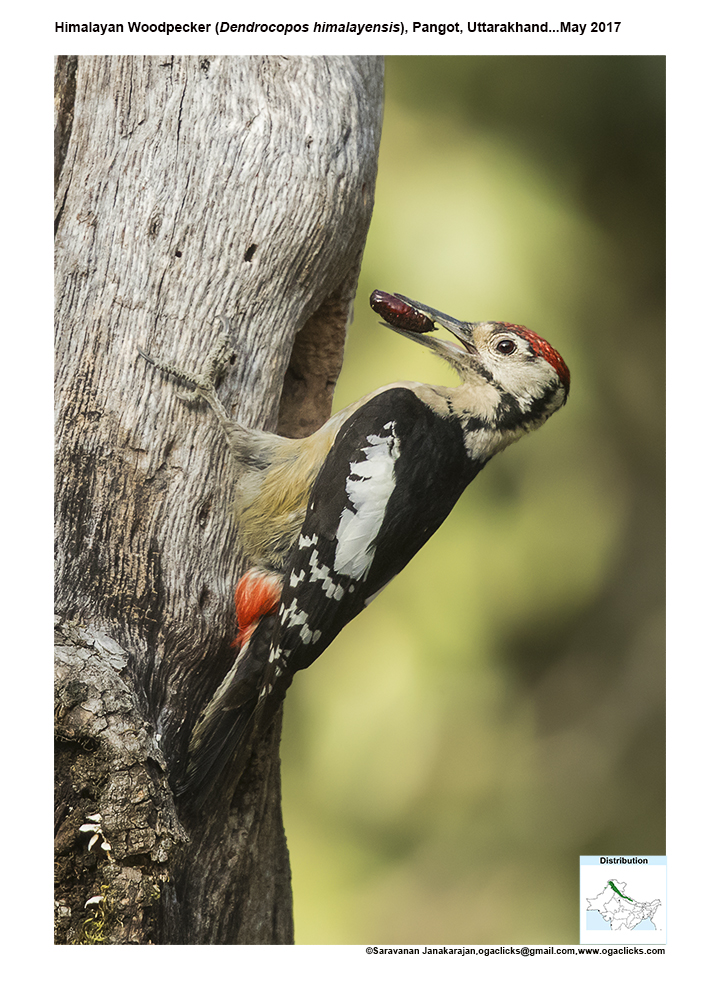Himalayan Woodpecker

Himalayan Woodpecker Dendrocopos himalayensis
Etymology:
- Dendrocopos : Greek word dendron tree; kopos – striking
- Himalayensis : From Himalayas
Vernacular Names : Kash: Hor koel makots, Koel-ku kor, Koel taktak, H.P.: Turkan
Distribution in India: Resident of Western Himalayas in India.
Description: Size of 23–25 cm; wt. of 57–85 g. The male has pale buff-white forehead, crimson-red from crown to upper nape usually with some black or grey feather bases showing at forecrown and crown sides and black hindneck. It has white lores, superciliary area, cheeks and ear-coverts are tinged buff; variable black patch behind eye, often isolated and prominent, sometimes meeting crown, complete black malar stripe expanding on side of neck, joining black stripe that continues slightly down on to side of upper breast and up behind ear-coverts to meet side of hindcrown. The rear part of side of neck is white to light buffish. The entire upperparts are black, inner wing-coverts with much white, flight-feathers are barred white; uppertail is black, outer 2 feathers are largely white with black at base and few black bars at tip. It is pale buff or greyish-brown below, breast often sullied yellowish-brown, yellower on belly, red on lower belly and undertail-coverts, occasionally hint of streaks or bars on lower flanks. It has moderately long bill almost straight, chisel-tipped, and blackish to dark grey, often paler lower mandible. The iris is red-brown; legs are grey to dull green or green-brown. The female has black crown to nape. The juvenile is duller than adult, black areas in adult are browner, ventral area pink, not red, and not reaching belly, some streaks on upper flanks and bars on lower flanks, both sexes with white spots on forecrown and orange-red patch in crown centre, smaller on female.
Habitat: It is found in dense, dry to wet, extensive coniferous forest, also oak and rhododendron mountain forest. It is found from 1970 m and 3200 m.
Food habits: It eats Insects and their larvae, other arthropods and plant matter like sap. It eats wood-boring beetle larvae, weevils, caterpillars and spiders; acorns and seeds of pines in winter. It forages singly or in pairs; occasionally joins mixed-species flocks of tits and warblers . It is an arboreal feeder, rarely descends to ground. Feeding techniques include pecking, probing, hammering, gleaning. Anvils used for processing pine cones.
Breeding habits: They breed in Apr and May in India. The breeding display includes aerial pursuits near nest. The nest-hole excavated by both sexes, mostly by male, in dead part of trunk or large branch of tree, with local preference for deciduous. They lay a clutch of 3–5 eggs. Both sexes incubate for a period of 2 weeks. Both parents feed the nestlings. The fledging period is 3 weeks.